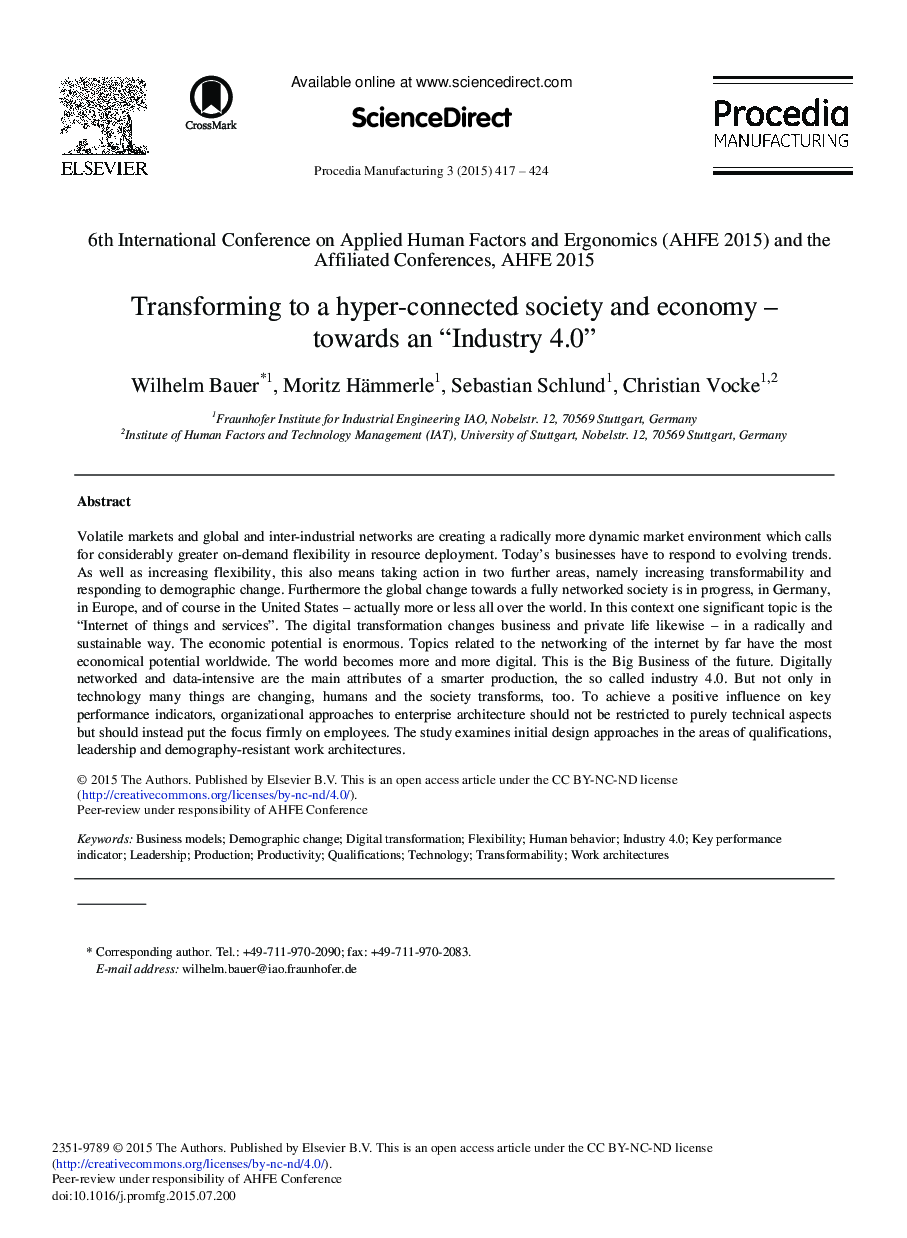| کد مقاله | کد نشریه | سال انتشار | مقاله انگلیسی | نسخه تمام متن |
|---|---|---|---|---|
| 1143817 | 1489609 | 2015 | 8 صفحه PDF | دانلود رایگان |

Volatile markets and global and inter-industrial networks are creating a radically more dynamic market environment which calls for considerably greater on-demand flexibility in resource deployment. Today's businesses have to respond to evolving trends. As well as increasing flexibility, this also means taking action in two further areas, namely increasing transformability and responding to demographic change. Furthermore the global change towards a fully networked society is in progress, in Germany, in Europe, and of course in the United States – actually more or less all over the world. In this context one significant topic is the “Internet of things and services”. The digital transformation changes business and private life likewise – in a radically and sustainable way. The economic potential is enormous. Topics related to the networking of the internet by far have the most economical potential worldwide. The world becomes more and more digital. This is the Big Business of the future. Digitally networked and data-intensive are the main attributes of a smarter production, the so called industry 4.0. But not only in technology many things are changing, humans and the society transforms, too. To achieve a positive influence on key performance indicators, organizational approaches to enterprise architecture should not be restricted to purely technical aspects but should instead put the focus firmly on employees. The study examines initial design approaches in the areas of qualifications, leadership and demography-resistant work architectures.
Journal: Procedia Manufacturing - Volume 3, 2015, Pages 417-424